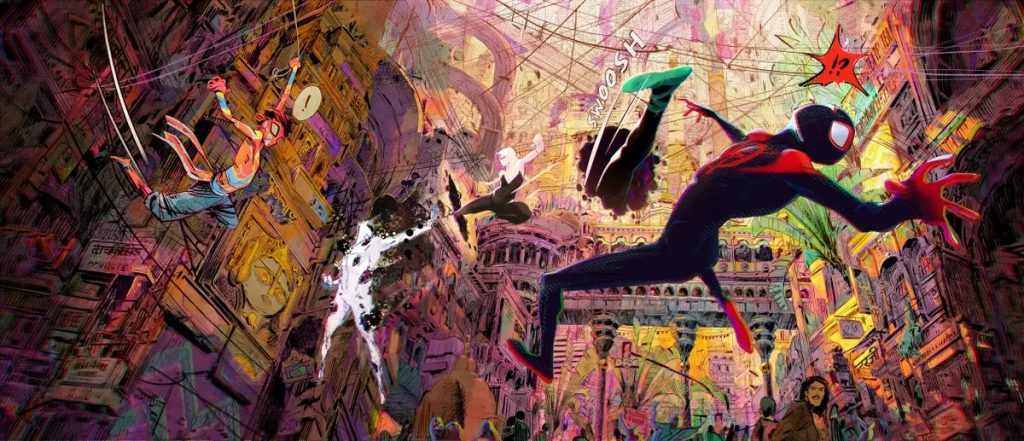Indian art has a rich and diverse heritage that has been shaped by the country’s cultural, religious, and historical influences for centuries. From cave paintings to temple sculptures and Mughal miniatures, Indian art is like a beautiful tapestry woven with different artistic traditions. These traditions have been influenced by dynasties, regional variations, and cross-cultural exchanges.
In recent years, a fascinating trend has emerged in the Indian art scene. It’s called the fusion art movement, where traditional and contemporary elements come together in a captivating way. Artists skillfully combine the timeless beauty of traditional Indian art with innovative techniques and concepts inspired by the modern world. This fusion creates artworks that bridge the gap between tradition and innovation.
The fusion art in Indian paintings is a creative exploration that goes beyond rigid categorizations. Artists draw inspiration from traditional art forms like Madhubani, Tanjore, and Pattachitra, but they add fresh perspectives and themes to them. They also use new techniques, materials, and mediums to create thought-provoking compositions that connect the heritage of the past with the realities of the present.
This artistic approach not only challenges conventional boundaries but also contributes to the evolving landscape of Indian art. It invites viewers to embark on a visual journey that transcends time, appreciating the rich heritage of Indian art while embracing the spirit of innovation. The fusion of traditional and contemporary elements in Indian art paintings is a testament to the enduring legacy of Indian art. It shows how artists continue to push artistic boundaries, explore cultural crossroads, and create captivating works that embody the essence of a dynamic and ever-evolving artistic tradition.
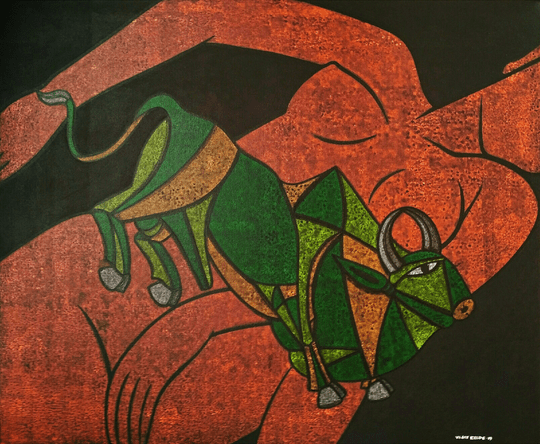
Exploring the Beauty of Traditional Indian Art
India is famous for its incredible variety of traditional art forms. These art forms come from different regions and show the unique cultures and histories of their origins. Let’s take a look at some of the most prominent traditional art forms:
- Madhubani: A Burst of Colors

Madhubani art comes from Bihar and is known for its intricate and vibrant depictions of mythological figures, nature, and daily life. The artists use bold lines, geometric patterns, and bright colors to create visually captivating compositions.
2. Tanjore: A Touch of Royalty
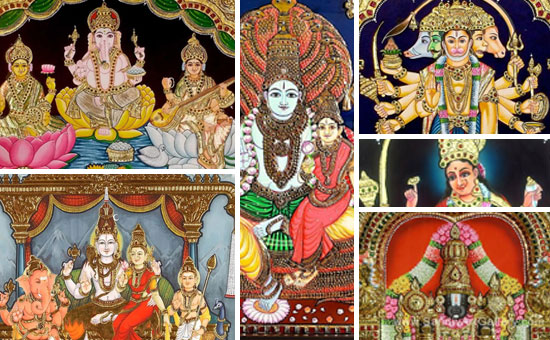
Tanjore art originates from Tamil Nadu and is famous for its richly adorned and gilded compositions. It often features divine figures, especially Hindu deities, embellished with semi-precious stones, gold leaf, and vibrant colors. What makes this art form unique is its three-dimensional relief work.
3. Miniature Paintings: A World in Miniature

Miniature paintings were developed during the Mughal era. These artworks are incredibly detailed and intricate, with delicate brushwork and fine details. They often depict royal scenes, courtly life, epic stories, and portraits of nobility.
Traditional Indian art forms share some common features and techniques:
- Intricate Detailing:
Traditional Indian art is all about paying close attention to the tiniest details. Whether it’s creating beautiful patterns, capturing facial expressions, or adding decorative elements, Indian artists make sure every little thing is just perfect.
- Symbolism and Narrative:
Traditional Indian art often tells a story or conveys a deeper meaning through symbols. These symbols can represent religious beliefs, mythological tales, or important events from history. So, when you look at Indian art, you’re not just seeing pretty pictures, but also getting a glimpse into a rich cultural heritage.
- Use of Natural Colors:
Indian artists love using colors that come from nature. They make their own pigments using minerals, plants, and other natural sources. This gives their artwork a unique and vibrant look. Some of the colors they use include indigo, turmeric, and vermillion.
- Specialized Techniques:
Each Indian art form has its own special techniques. For example, in Tanjore art, artists use gold leaf and gemstones to add a touch of luxury to their creations. On the other hand, miniature paintings require delicate brushwork and intricate detailing to bring out the beauty in a small space.
Examples of renowned traditional Indian artists and their iconic artworks
Nainsukh: A Master of Pahari School of Miniature Painting
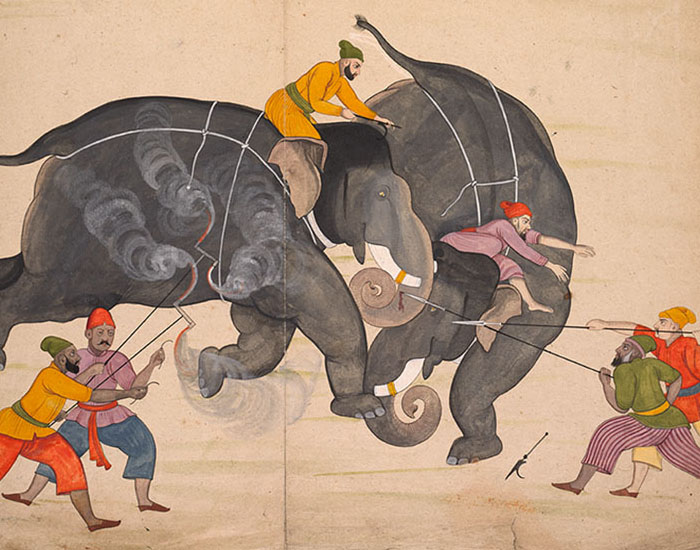
Nainsukh was an amazing painter from the Pahari school of miniature painting. He created remarkable artworks that showed scenes from the Rajput courts of the 18th century. His paintings were small, but they were filled with intricate details and vibrant colors.
Sita Ram: A Tale-Telling Painter
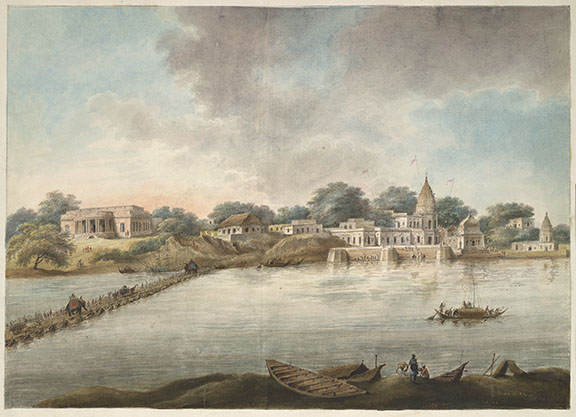
Sita Ram was known for his exceptional skills in Pahari miniature painting. He produced exquisite illustrations of the Ramayana and other mythological tales. His paintings brought these stories to life, capturing the emotions and adventures of the characters.
Jamini Roy: A Modern Artist with a Twist

Jamini Roy was a modern Indian artist who drew inspiration from folk art. His works blended traditional elements with a contemporary twist. His iconic paintings showcased bold lines, flat colors, and rural themes. Looking at his paintings, you can feel the energy and simplicity of rural life.
Raja Ravi Varma: The Great Fusion Artist
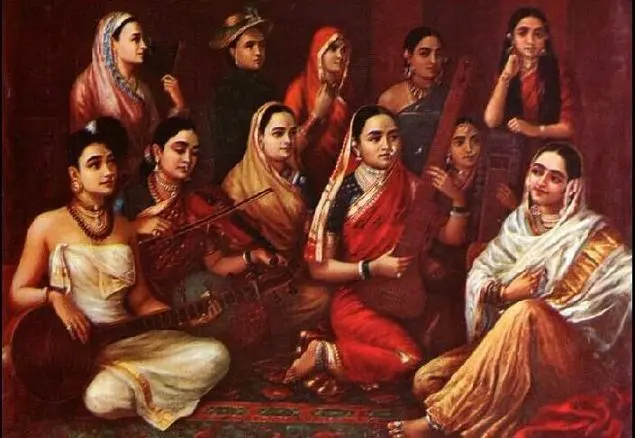
Raja Ravi Varma is considered one of India’s greatest painters. He combined European academic techniques with Indian aesthetics, creating iconic portraits and mythological scenes. His paintings were grand and majestic, capturing the beauty and grace of Indian culture.
These artists and their artworks represent the mastery and creativity of traditional Indian art. Their paintings continue to inspire and influence contemporary artists, even in the fusion art movement. Traditional Indian art is a treasure trove of stories, emotions, and cultural heritage.
The Amazing Rise of Modern Indian Artists
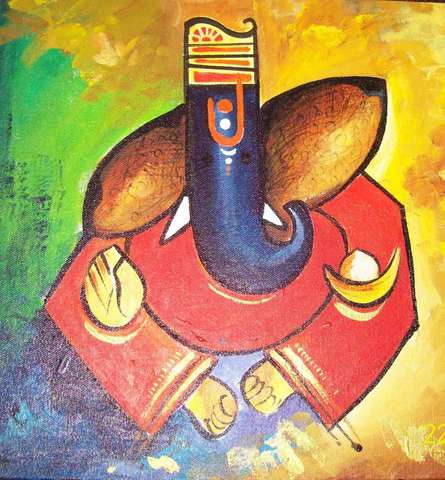
Breaking Away from Tradition
Did you know that in recent years, there has been a rise of super cool Indian artists who are doing things differently? These artists are breaking away from the old, traditional ways of making art and are trying out new and exciting ways to express themselves. They are inspired by things happening all around the world, their own experiences, and important issues in society. They mix old techniques with new materials and love to experiment and try out new things.
Going Global
Thanks to the influence of globalization, these artists are getting a chance to show their work to people from all over the world. They are getting to know artists from different cultures and are learning from them. This helps them to think about their art in new and exciting ways. Some of the most famous modern Indian artists like Subodh Gupta, Bharti Kher, Jitish Kallat, and Shilpa Gupta have made a big impact with their art. They use different materials like sculptures, installations, mixed media, and performance art to talk about important things like migration, identity, social inequality, and how different cultures come together. Their art shows us what life is like in modern India and also adds to the bigger conversation about art happening all around the world.
The Fusion: Traditional and Contemporary Elements in Indian Art Paintings
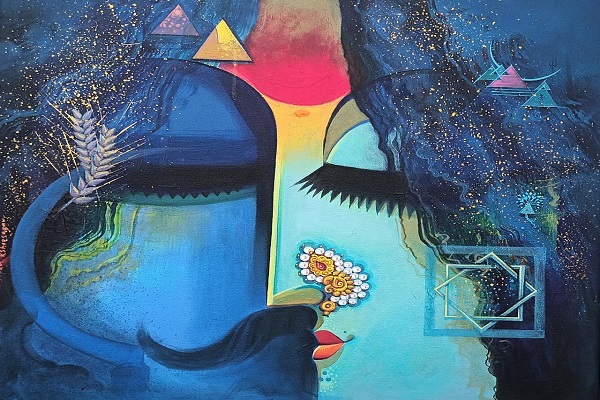
A Beautiful Blend of Old and New
Indian art paintings are a fascinating mix of traditional and contemporary elements. Artists use different techniques, motifs, and materials to create stunning artworks that combine the best of both worlds. They take traditional art forms and give them a modern twist, resulting in visually striking compositions.
Bringing the Past to Life
Artists skillfully blend traditional and contemporary techniques to bring new life to age-old practices. They experiment with various artistic approaches, like using digital tools, mixed media, and unconventional materials. By combining traditional brushwork, layering techniques, and symbolic motifs with modern methods, they create artworks that have a unique aesthetic balance.
Traditional Motifs in Modern Art
One way artists achieve this fusion is by incorporating traditional motifs into modern compositions. They pay tribute to India’s rich cultural heritage while adding a fresh and contemporary touch to their works. You might see traditional Indian deities in modern settings or intricate patterns seamlessly integrated into abstract or surrealistic pieces.
Exploring New Materials and Mediums
Artists also experiment with materials and mediums. They explore the possibilities of traditional materials, like natural pigments and handmade papers, alongside modern ones like acrylics and digital tools. They even go beyond traditional painting techniques by incorporating mixed media, collage, and three-dimensional elements. The result is visually captivating artworks that merge traditional aesthetics with modern sensibilities.
Celebrating Heritage and Progress
Through the fusion of traditional and contemporary elements, Indian artists celebrate the timeless beauty of their heritage while embracing the dynamism of the present. Their creations invite viewers to engage with art that bridges the gap between tradition and innovation. Indian art showcases the versatility, adaptability, and progressive spirit of Indian artists.
Exploring Themes and Subjects in Fusion Art
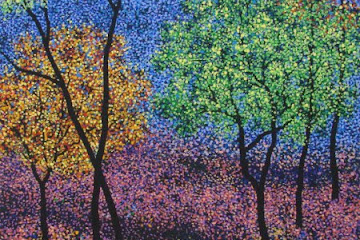
The Dynamic Blend of Traditional and Contemporary Elements
Fusion art is a cool type of art that mixes together traditional and modern elements. Artists who create fusion art use different themes and subjects to make their artwork interesting and thought-provoking. They want to show how the past and the present can come together in a cool and unique way.
Reimagining Ancient Stories in a Modern World
One theme that artists often explore in fusion art is ancient mythology. They take old stories and characters and give them a modern twist. By adding modern symbols and settings, they show that these old stories are still important and can teach us valuable lessons even today.
Speaking Out on Social and Political Issues
Another important theme in fusion art is social and political commentary. Artists use a mix of traditional and modern symbols to talk about important issues in our society. They want to start conversations and challenge the way things are. They might talk about things like gender equality, cultural differences, or unfairness in society.
Preserving Cultural Heritage in a Changing World
Fusion art also explores the idea of cultural identity and heritage. Artists want to show how different cultures can come together and shape our world today. They blend traditional elements with modern ones to show that our cultural heritage is still important and should be celebrated.
Reflecting on Timeless Themes in a Changing World
In summary, fusion art is all about mixing old and new to create something amazing. Artists use themes like reinterpreted mythology, social and political commentary, and cultural identity to make their artwork meaningful and interesting. They want to start conversations and make people think about important topics. So next time you see a fusion art piece, take a moment to think about the past and the present coming together in a cool and unique way.
The Impact and Reception of Fusion Art in the Indian Art Scene
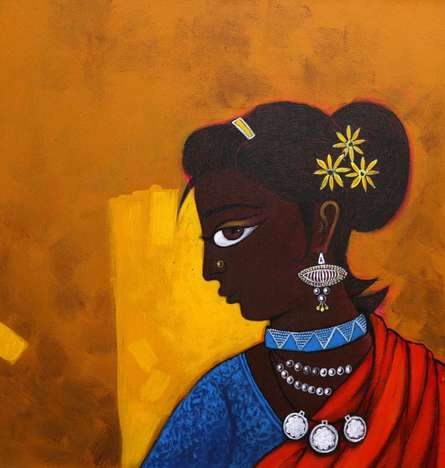
The Cool Mix of Old and New in Indian Art
Have you ever heard of fusion art? It’s a super cool style of art in India that combines traditional and modern elements. This unique blend has made a big impact on the Indian art scene. Some people really love fusion art because it’s different and brings together old and new ideas. But not everyone is a fan. Some people question if fusion art is authentic and true to Indian culture.
The Art Market is Loving Fusion Art
Fusion art is not only popular among art lovers, but it’s also a hit in the art market. People who collect art and those who just love looking at it are drawn to fusion art because it’s so unique and vibrant. These artworks mix traditional Indian styles with modern ideas. Because of this, fusion art paintings are becoming more valuable and artists who specialize in fusion art are getting more attention and success.
Special Spaces for Fusion Art
The fusion art movement has even led to special exhibitions and galleries that focus on showcasing fusion art. These spaces give artists a chance to show off their work and connect with a bigger audience. Some galleries even have collections that are all about fusion art. This helps fusion art get more recognition and become more popular in the Indian art scene.
Fusion Art Keeps Pushing Boundaries
All in all, fusion art is making a big impact in the Indian art world. It’s breaking boundaries and showing how Indian art can be dynamic and exciting in a globalized world. So, if you ever come across fusion art, take a moment to appreciate the cool mix of old and new that it brings!
The Exciting Future of Fusion Art in India
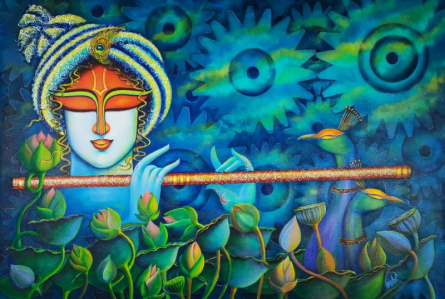
The Blend of Tradition and Innovation
The future of fusion art in India is full of exciting possibilities! Fusion art is all about combining traditional and contemporary elements to create amazing artworks. Artists have the chance to experiment and push the boundaries of fusion art, making visually stunning pieces.
The Role of Technology and Digital Media
Technology and digital media will play a big part in the evolution of fusion art. Artists will have access to tools that allow them to integrate digital elements into their artwork. They can also share their creations with a wider audience through online platforms. This means that fusion art can reach people all over the world!
Cross-Cultural Collaborations and Exchanges
Fusion art also opens up opportunities for artists to collaborate and exchange ideas with artists from different cultures. They can learn from each other’s artistic traditions and create artworks that go beyond cultural boundaries. International exhibitions and art festivals provide platforms for showcasing fusion art to a global audience, promoting cultural exchange and appreciation.
The Ever-Evolving Nature of Fusion Art
With continued experimentation, technological advancements, and cross-cultural collaborations, fusion art in India will keep evolving. This will enrich the artistic landscape and reflect the dynamic nature of contemporary Indian art. The future of fusion art is bright and full of endless possibilities!
Key Takeaways
Fusion art in Indian paintings is a special kind of art that combines traditional and modern elements. It shows the diverse culture and global connections of contemporary India. By exploring and appreciating fusion art, we can learn more about India’s rich cultural heritage and artistic vision. Fusion art is important because it pushes boundaries, starts conversations, and gives us new perspectives. It also encourages collaborations between different cultures, which helps art and culture grow.
When we embrace the mix of tradition and innovation in fusion art, we help Indian art forms keep evolving. Let’s celebrate the beauty and importance of fusion art, and encourage others to explore and appreciate the different expressions of Indian art.


